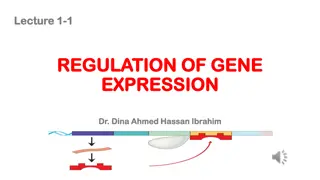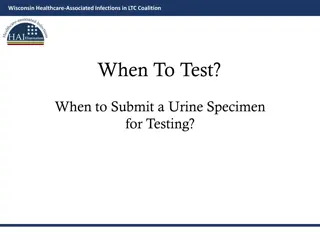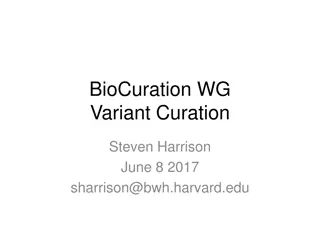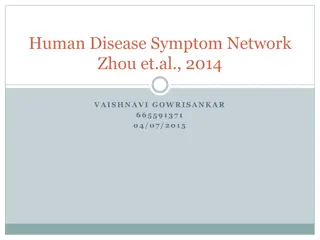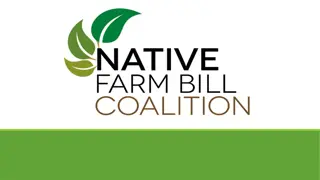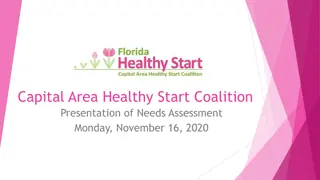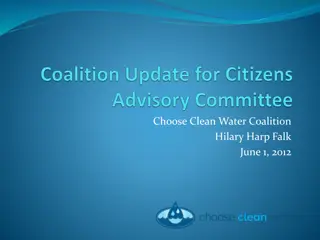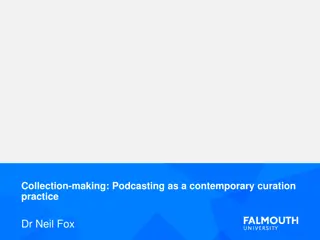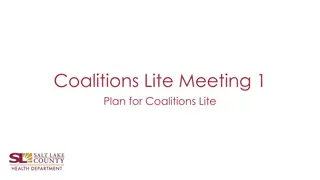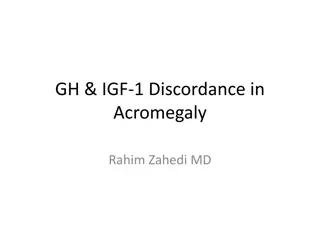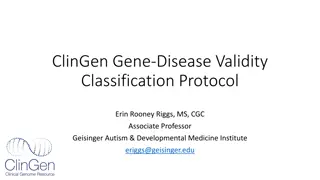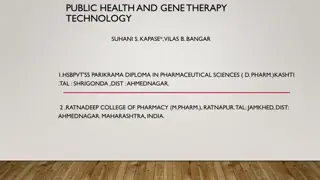The Gene Curation Coalition: Addressing Discordance in Gene-Disease Evidence
The Gene Curation Coalition, led by Dr. Marina DiStefano, aims to harmonize gene-disease evidence resources and establish consistent terminology for gene validity assessment. Through collaborative efforts, the coalition seeks to resolve differences in gene curation projects, focusing on understanding and resolving discordance factors such as disease definition, curation purpose, and evidence evaluation dates.
Download Presentation

Please find below an Image/Link to download the presentation.
The content on the website is provided AS IS for your information and personal use only. It may not be sold, licensed, or shared on other websites without obtaining consent from the author.If you encounter any issues during the download, it is possible that the publisher has removed the file from their server.
You are allowed to download the files provided on this website for personal or commercial use, subject to the condition that they are used lawfully. All files are the property of their respective owners.
The content on the website is provided AS IS for your information and personal use only. It may not be sold, licensed, or shared on other websites without obtaining consent from the author.
E N D
Presentation Transcript
The Gene Curation Coaltion Marina DiStefano, PhD, FACMG PMFG Rare-Gen Masterclass Dec 1, 2024 DiStefano et al. The Gene Curation Coalition: A global effort to harmonize gene-disease evidence resources. GIM, PMID: 35507016
The Need for Curated Gene Databases of Gene-Disease Validity Predictive Tests Diagnostic Panels Exome/Genome Hypertrophic cardiomyopathy tests from 14 different US clinical labs Different levels of evidence are needed for different clinical uses Standards and consensus are needed for which genes are valid disease genes that are ready for clinical testing
Goals of Gene Curation Coalition (GenCC) Understand the approaches and classification systems of the different curation efforts Develop consistent terminology for validity assessment as well as inheritance, allelic requirement, mechanism of disease Post gene curations from any group willing to share with the public The GenCC DB is like a ClinVar for genes! Resolve differences and collaborate on gene curation projects
Pilot comparisons identified reasons for gene curation discordance Definition of disease (high penetrance versus inclusion of lower penetrance phenotypes) Purpose of curation (validity versus panel inclusion based on phenotype match) Differences in disease/phenotype assignment (genes often have claims for multiple diseases) Date of evidence evaluation Understanding the differences and focusing on resolving them requires harmonization of terms and definitions
Comparison of Terms ClinGen GDM G2P Orphanet OMIM PanelApp Definitive Red Confirmed Present Yes Green Strong Red Confirmed Present Yes Green Moderate Grey-Red Probable Absent Yes Amber Grey-Blue / Grey-Red? Limited Possible Candidate ?Disease Red No evidence Blue Absent Absent No disease claim Red Disputed Grey-Blue Absent Candidate ?Disease Red/Amber Absent (Suppressed) Refuted Blue Absent Reclassified-VUS Red
Survey Round 3 Demographics Multiple responses allowed
Demographics Multiple responses allowed
Strength of Evidence vs. Confidence/Likelihood Example: Strong/Weak vs. Likely/Possible Which system is more agreeable? Choose one or support both systems?
a gene that has unequivocally been implicated in disease Strongly Agree=2pts, Agree=1pt, Neutral=0pts, Disagree=-1pts, Strongly Disagree=-2pts Evidence Terms Likelihood Terms
a gene where there is an intermediate amount of evidence in humans to support a causal role Evidence Terms Likelihood Terms
a gene where little human evidence exists to support a causal role Evidence Terms Likelihood Terms
a gene that, although evidence has been reported, other evidence of equal weight challenges the claim Evidence Terms Likelihood Terms
a gene with a reported gene-disease relationship, but new valid evidence has arisen that overturns the original body of evidence Evidence Terms Likelihood Terms
a gene where no human disease evidence exists, but a convincing animal model of the disease exists
a gene where no disease claim in any organism has ever been made
Finalized Terms Delphi survey round 3 had 93% term agreement (13/14 terms) with round 2, suggesting the genetics community is harmonious with GenCC All groups map to these terms on the GenCC website (Or Supportive if not enough granularity to do so)
https://search.thegencc.org/ Phil Weller
Classifications Sorted By Disease We accept MONDO, OMIM, and Orpha IDs for disease submission. All diseases are mapped to MONDO.
Developing a mechanism curation framework Draft versions of LOF and GOF frameworks are complete. Working on DN now.
Future Enhancements API - In order to ingest OMIM data, we will be putting a submitter API in place. We are hoping to have a user API in place later in 2022. Log-in screen and dashboard for saving searches, following genes, etc. This will be similar to the ClinGen website. Disease searching flexibility: MONDO hierarchies will be incorporated into the database. This will allow users search flexibility for disease terms (search by any term in the MONDO tree, synonyms, HPO terms). This is also being discussed for the ClinGen website Granular capture of mechanism of disease Submitter that points out candidate genes in ClinVar with LP/P variants that are not in GenCC or OMIM yet
Acknowledgements Genetics Home Reference Scott Goehringer, Phil Weller - Website & Database


